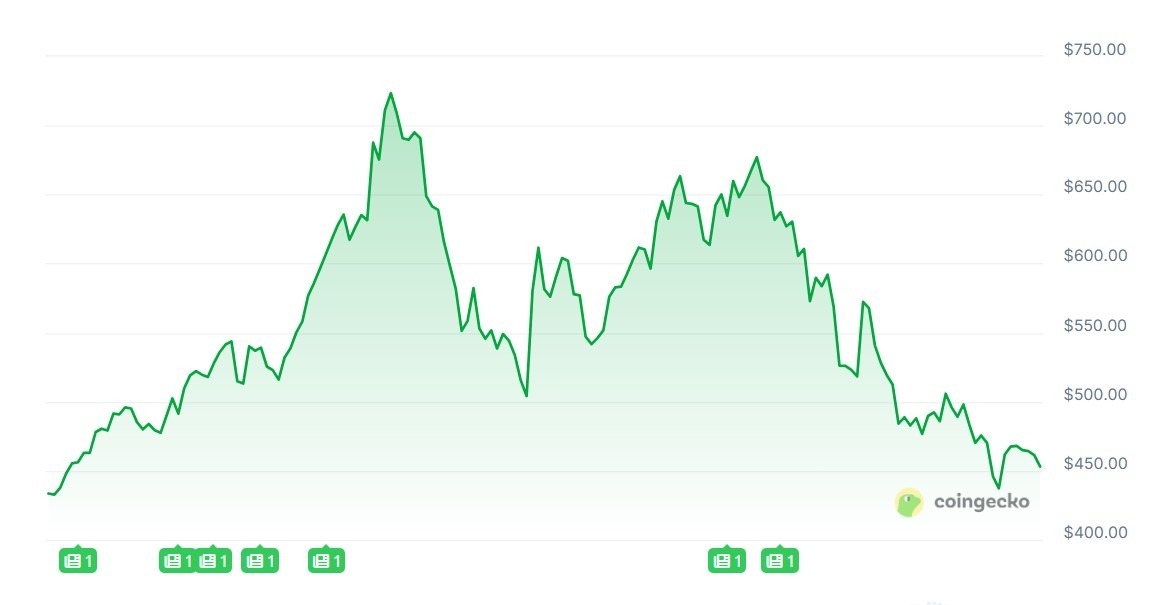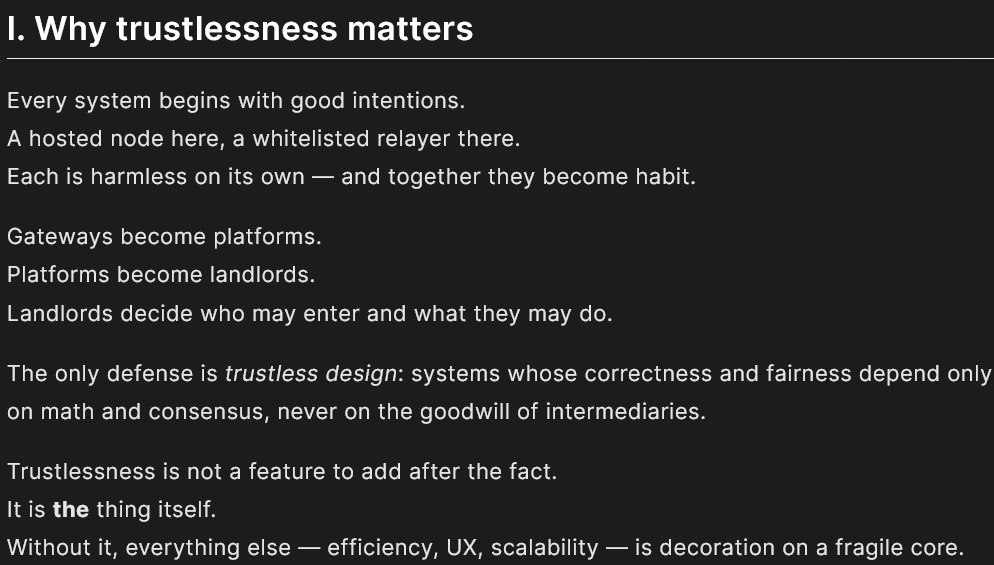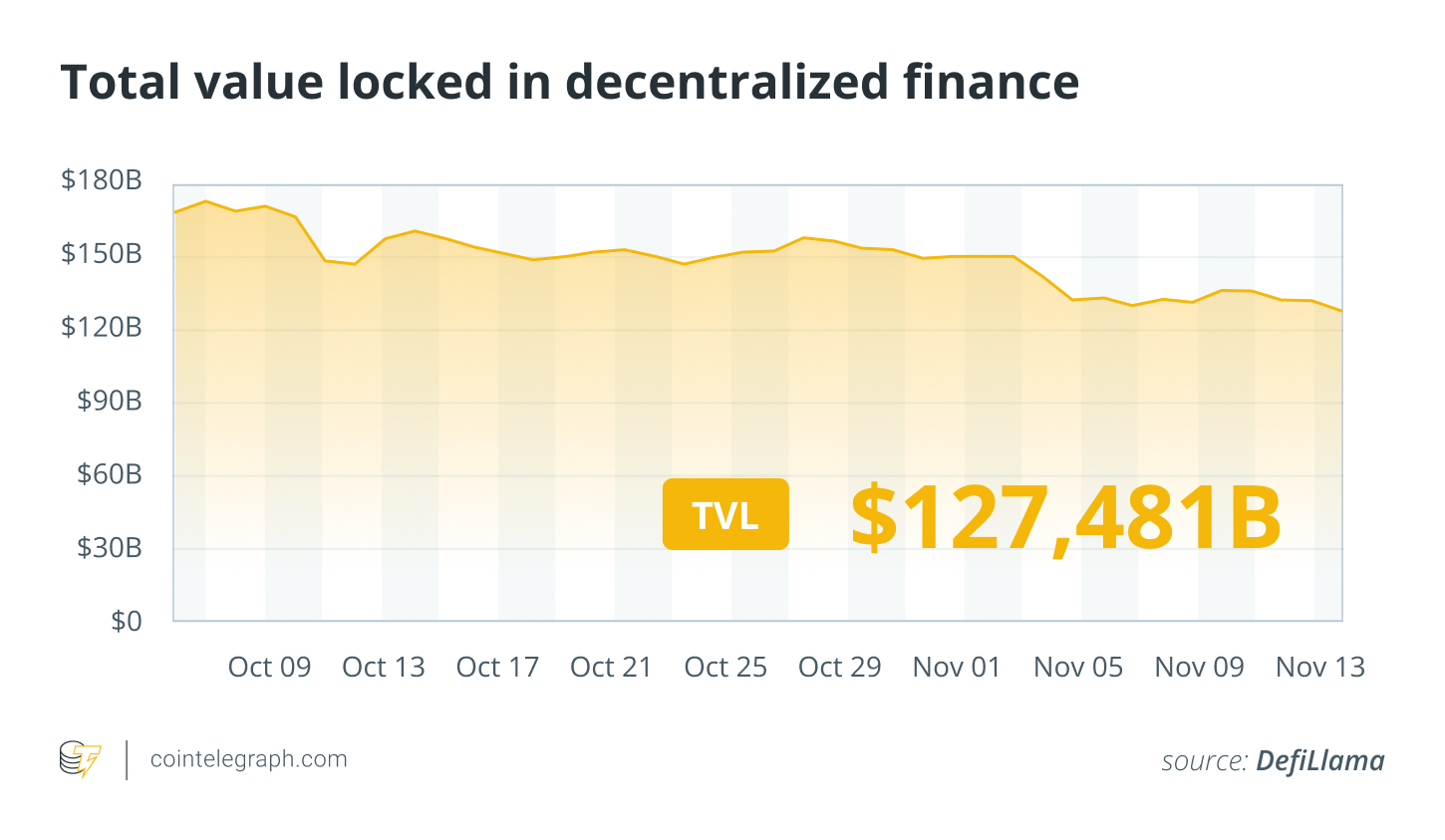Cryptocurrency markets have extended their decline despite much-awaited political developments taking place in the US.
On Wednesday, President Donald Trump signed a funding bill to end the record 43-day US government shutdown, after the bill passed through the Senate on Monday and was approved by the House of Representatives on Wednesday.
The bill provides funding to the government until Jan. 30, 2026, and gives Democrats and Republicans more time to strike a deal on broader funding plans for the year ahead.
The end of the shutdown failed to lift demand among Bitcoin (BTC) exchange-traded fund (ETF) buyers. Spot BTC ETFs saw a brief resurgence on Tuesday, attracting $524 million in inflows, but outflows quickly resumed, with a whopping $866 million in daily net outflows on Thursday, according to Farside Investors.
Bitcoin fell to a six-month low of $95,900 on Friday, a level last seen in May as its biggest demand drivers continued to lack momentum.
Investments from ETFs and Michael Saylor’s Strategy were the two main vehicles driving demand for Bitcoin’s price this year, according to Ki Young Ju, founder and CEO of crypto analytics platform CryptoQuant.
Bitcoin ETF demand stalls as US shutdown optimism fails to lift sentiment
The lack of demand for spot Bitcoin ETFs is raising concerns about Bitcoin’s prospects for the rest of the year.
On Monday, the US Senate approved the funding bill and brought Congress a step closer to ending the shutdown. The legislation headed for a full vote in the House of Representatives, which occurred on Wednesday.
Despite optimistic news from the US, spot Bitcoin ETF investments remained flat on Monday, with just $1.2 million of inflows, according to data from Farside Investors.

“Despite the US shutdown seemingly ending, and the S&P and Gold bouncing hard, Bitcoin ETFs saw NO bid yesterday,” said Capriole Investments founder, Charles Edwards, adding that this is not a dynamic we want to see continue.
“Risk assets usually see a strong bid in the weeks out of the Shutdown. Still time to turn this ship around, but it needs to turn,” Edwards wrote in a Tuesday X post.
Spot Bitcoin ETF inflows were the primary driver of Bitcoin’s momentum in 2025, Standard Chartered’s global head of digital assets research, Geoff Kendrick, told Cointelegraph recently.
Bitwise exec says 2026 will be crypto’s real bull year; here’s why
Bitwise chief investment officer Matt Hougan is more confident that crypto markets will boom in 2026, particularly as there hasn’t been a late 2025 rally.
Speaking to Cointelegraph at The Bridge conference in New York City on Wednesday, Hougan said a crypto market rally at the end of 2025 would have fit the four-year cycle thesis, meaning 2026 would mark the start of a bear market, similar to 2022 and 2018.
When asked to revise his prediction about whether the crypto market will boom in 2026, Hougan said: “I’m actually more confident in that quote. The biggest risk was [if] we ripped into the end of 2025 and then we got a pullback.”
Hougan said interest in the Bitcoin debasement trade, stablecoins and tokenization would continue to accelerate, while arguing that Uniswap’s fee switch proposal introduced on Monday would reinvigorate interest in decentralized finance protocols in the coming year.
“I think the underlying fundamentals are just so sound,” Hougan said. “I think these earlier forces, institutional investment, regulatory progress, stablecoins, tokenization, I just think those are too big to keep down. So I think 2026 will be a good year.”

Arthur Hayes tells Zcash holders to withdraw from CEXs and “shield” assets
The privacy coin sector returned to the spotlight after BitMEX co-founder Arthur Hayes urged Zcash holders to withdraw their assets from centralized exchanges (CEXs).
On Wednesday, Hayes told holders to “shield” their assets, a feature that enables private transactions within the Zcash network. “If you hold $ZEC on a CEX, withdraw it to a self-custodial wallet and shield it,” Hayes wrote on X.
The comments came as Zcash (ZEC) saw sharp price swings in the last few days. The token rallied to $723 on Saturday before dropping to $504 on Sunday. It then surged to a high of $677 on Monday, only to see another sharp decline. At the time of writing, ZEC was trading at about $450, marking a 37% decline from its Saturday high.
Analysts had warned that ZEC might undergo a sharp correction due to its relative strength index (RSI) reaching its highest reading after continuing to rally above its overbought zone.

Vitalik Buterin champions decentralization in “Trustless Manifesto”
Ethereum co-founder Vitalik Buterin has authored and signed the new “Trustless Manifesto,” which seeks to uphold core values of decentralization and censorship resistance and push builders to refrain from adding intermediaries and checkpoints for the sake of adoption.
The Trustless Manifesto, also authored by Ethereum Foundation researchers Yoav Weiss and Marissa Posner, said crypto platforms sacrifice trustlessness from the first moment that they integrate a hosted node or centralized relayer, explaining that while it feels harmless, it becomes a habit, and with each passing checkpoint, the protocol becomes less and less permissionless.
“Trustlessness is not a feature to add after the fact. It is the thing itself,” the Ethereum Foundation members said in the manifesto published Wednesday. “Without it, everything else — efficiency, UX, scalability — is decoration on a fragile core.”
“When complexity tempts us to centralize, we must remember: every line of convenience code can become a choke point.”

While the manifesto wasn’t aimed at any particular person or company, some Ethereum layer 2s have been criticized for sacrificing decentralization to focus on scalability to speed up adoption.
Sonic Labs pivots from speed to survival with business-first strategy
Sonic Labs, the organization behind the Sonic layer-1 blockchain, announced a major strategic shift as it pivots from emphasizing transaction speed to building long-term business value and token sustainability.
After claiming industry-leading performance last year, Sonic Labs said its next chapter will focus on upgrades that deliver measurable financial outcomes, including new Ethereum and Sonic Improvement Proposals (EIPs and SIPs), token supply reductions and revamped rewards for network participants.
“Every decision we make moving forward will be guided by the principles of building real value, with price, growth, and sustainability always in focus,” said Mitchell Demeter, the new CEO of Sonic Labs.
The focus aims to bring “measurable, lasting value” for builders, validators and tokenholders, wrote Demeter in a Tuesday X post. “Our mission at Sonic is to move beyond hype and build a sustainable business model for a layer one, that creates, captures, and returns real value to tokenholders.”
The new fee monetization upgrade will include a tiered reward system for builders and fixed rewards for validators.
Sonic Labs will also increase the rate of programmatic Sonic (S) token burns, which means permanently removing tokens from circulation to tighten the supply.

Sonic claims to be the world’s fastest Ethereum Virtual Machine (EVM) chain, with a “true” finality of 720 milliseconds (ms) — the assurance that a transaction is irreversible, which occurs after it is added to a block on the blockchain ledger.
DeFi market overview
According to data from Cointelegraph Markets Pro and TradingView, most of the 100 largest cryptocurrencies by market capitalization ended the week in the red.
The privacy-preserving Dash (DASH) token fell 45% to stage the biggest decline in the top 100, followed by the Internet Computer (ICP) token, down over 27% on the weekly chart.

Thanks for reading our summary of this week’s most impactful DeFi developments. Join us next Friday for more stories, insights and education regarding this dynamically advancing space.



